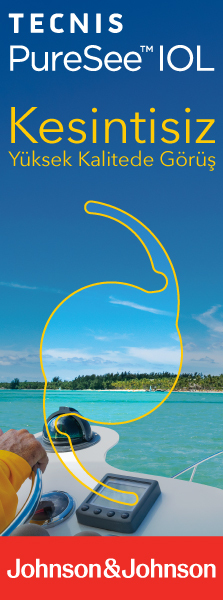2Atilim University School of Medicine Dept of Ophthalmology Ankara, Türkiye
3Gazi University School of Medicine, Dept of Ophthalmology, Ankara, Türkiye
4Baskent Universtiy Alanya Application and Research Center, Dept of Ophthalmology, Antalya, Türkiye DOI : 10.37844/TJ-CEO.2025.20.15 Purpose: To evaluate the changes in the peripapillary vessel density and retinal nerve fiber layer thickness changes in pseudoexfoliation syndrome compared to healthy controls.
Methods: The changes were studied in thirty eyes of thirty patients with pseudoexfoliation syndrome using optical coherence tomography angiography. Peripapillary vessel densities and peripapillary nerve fiber layer thicknesses were used to compare the optic nerve head characteristics in eyes with PSX and twenty-five healthy control eyes.
Results: Average, superior, and inferior RNFL thicknesses were similar in both groups (p:0.055, p:0.052, p:0.116 respectively). Eyes with PSX had lower VD values compared to healthy control groups in peripapillary, superior, and inferior segments. (p:0.011, p:0.013, p:0.017 respectively). There were significant positive correlations between RNFL thickness and peripapillary vessel density in their corresponding sectors except for inferotemporal and temporal superior sectors. (p<0.05 except inferotemporal and temporal-superior sectors)
Conclusion: In this study, peripapillary vessel density was found lower in eyes with pseudoexfoliation syndrome compared to age and systemic co-morbidity matched control group. These findings suggest that reduced peripapillary vessel density which may lead to ischemia might cause vulnerability to glaucomatous damage at the optic nerve head. However, further research needs to be done to establish whether the reduction of vessel density is associated with the progression to the pseudoexfoliation glaucoma and increased vulnerability to the glaucomatous damage.
Keywords : Optic coherence tomography angiography, psudoexfoliation syndrome, peripapillary vessel density




